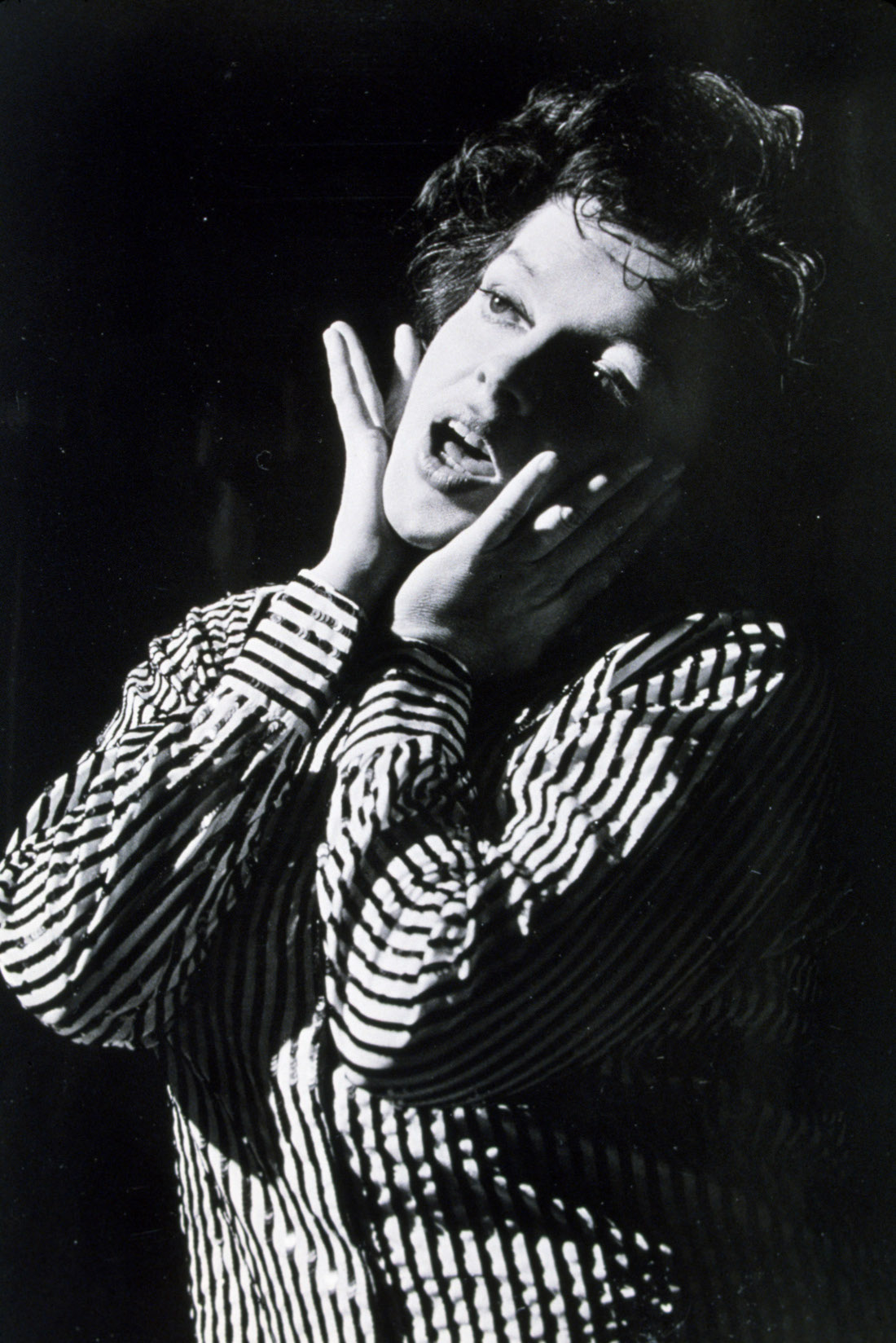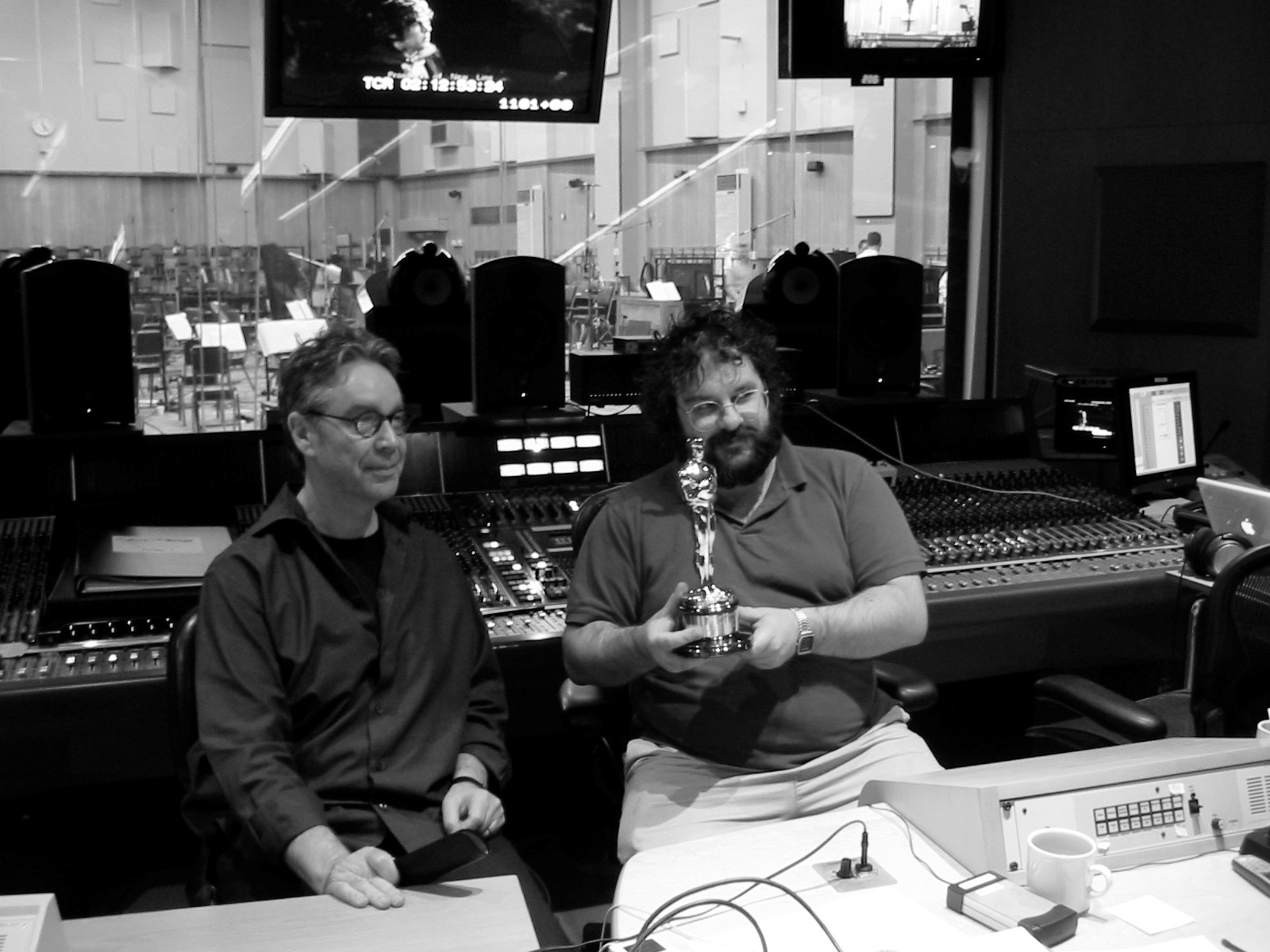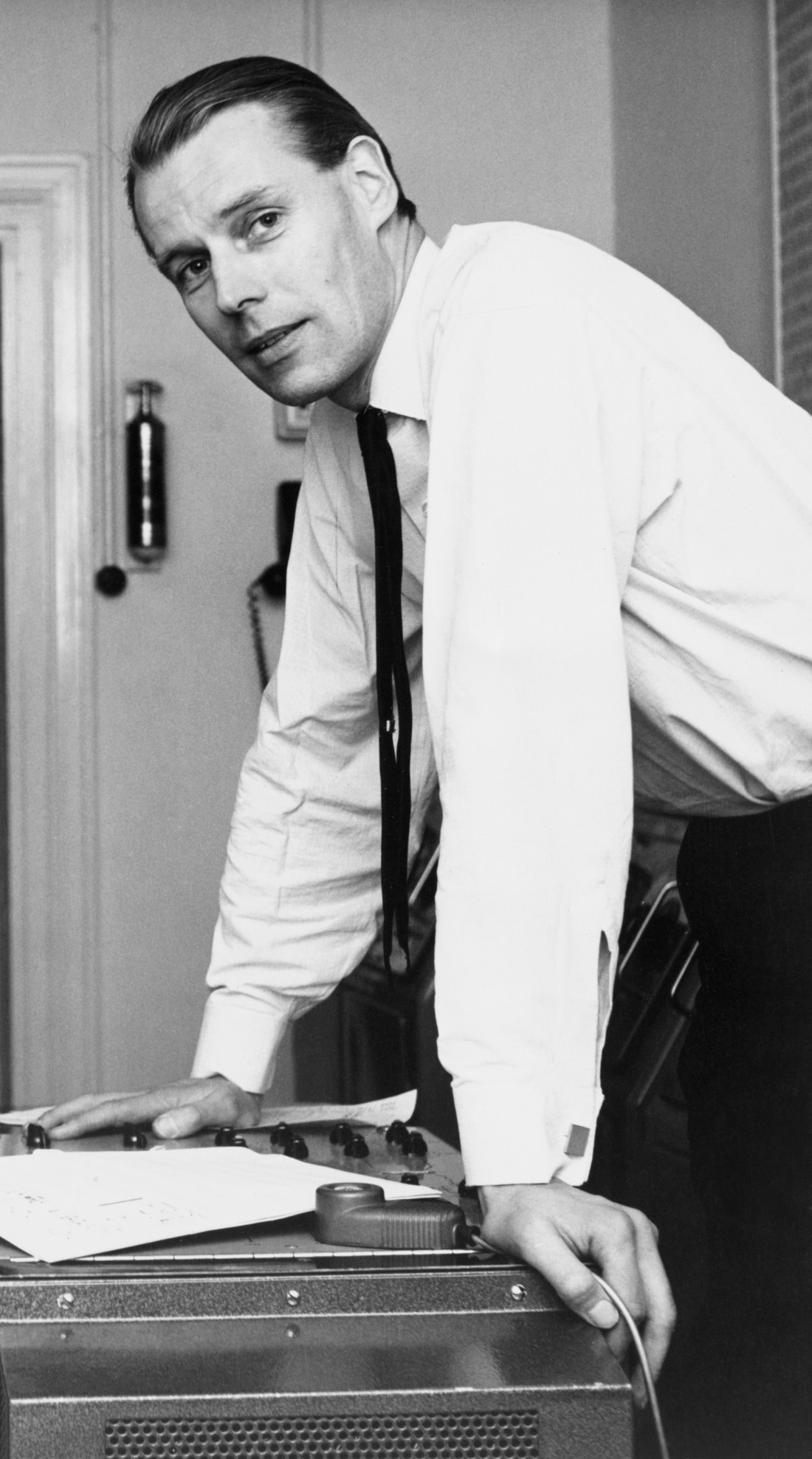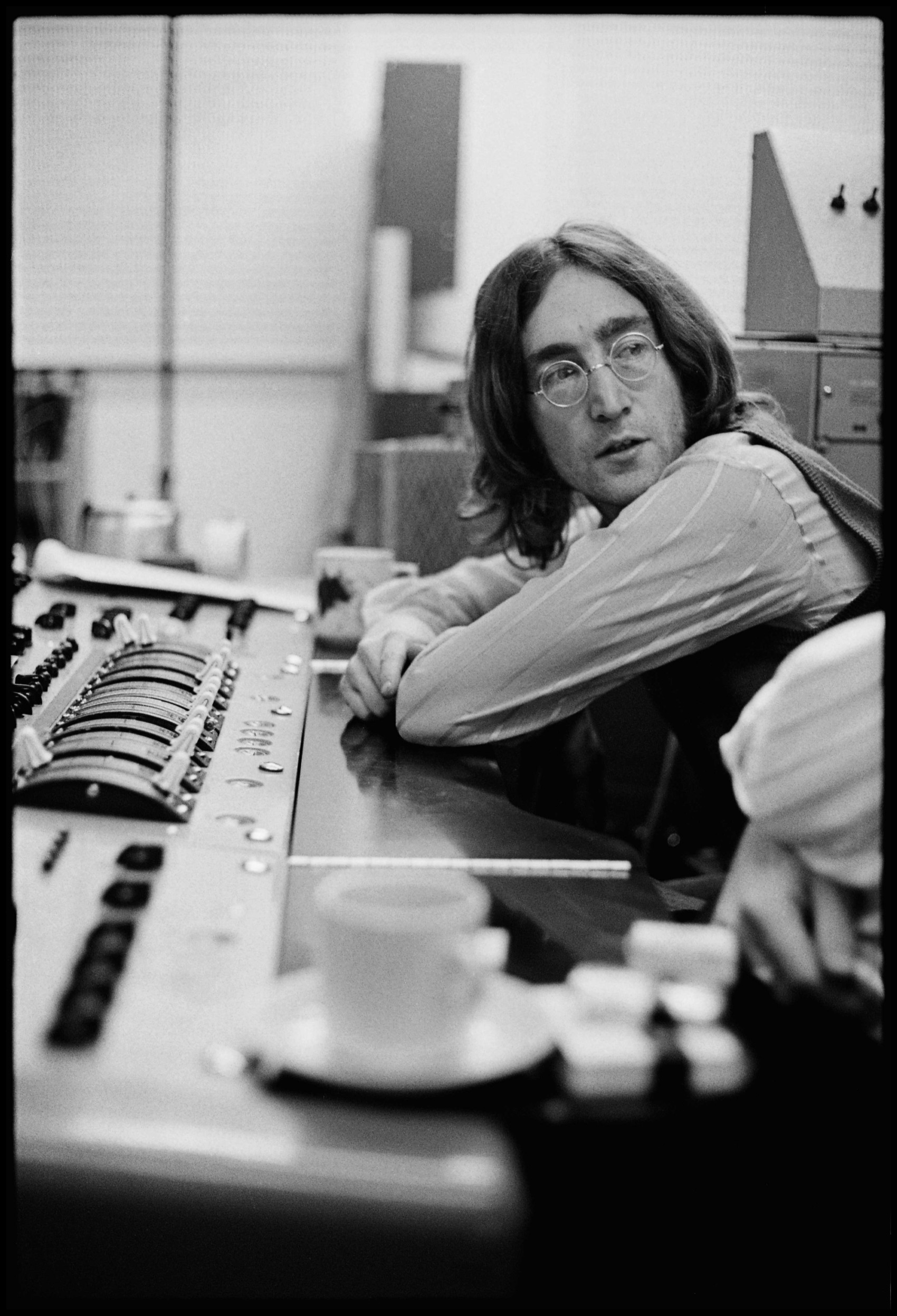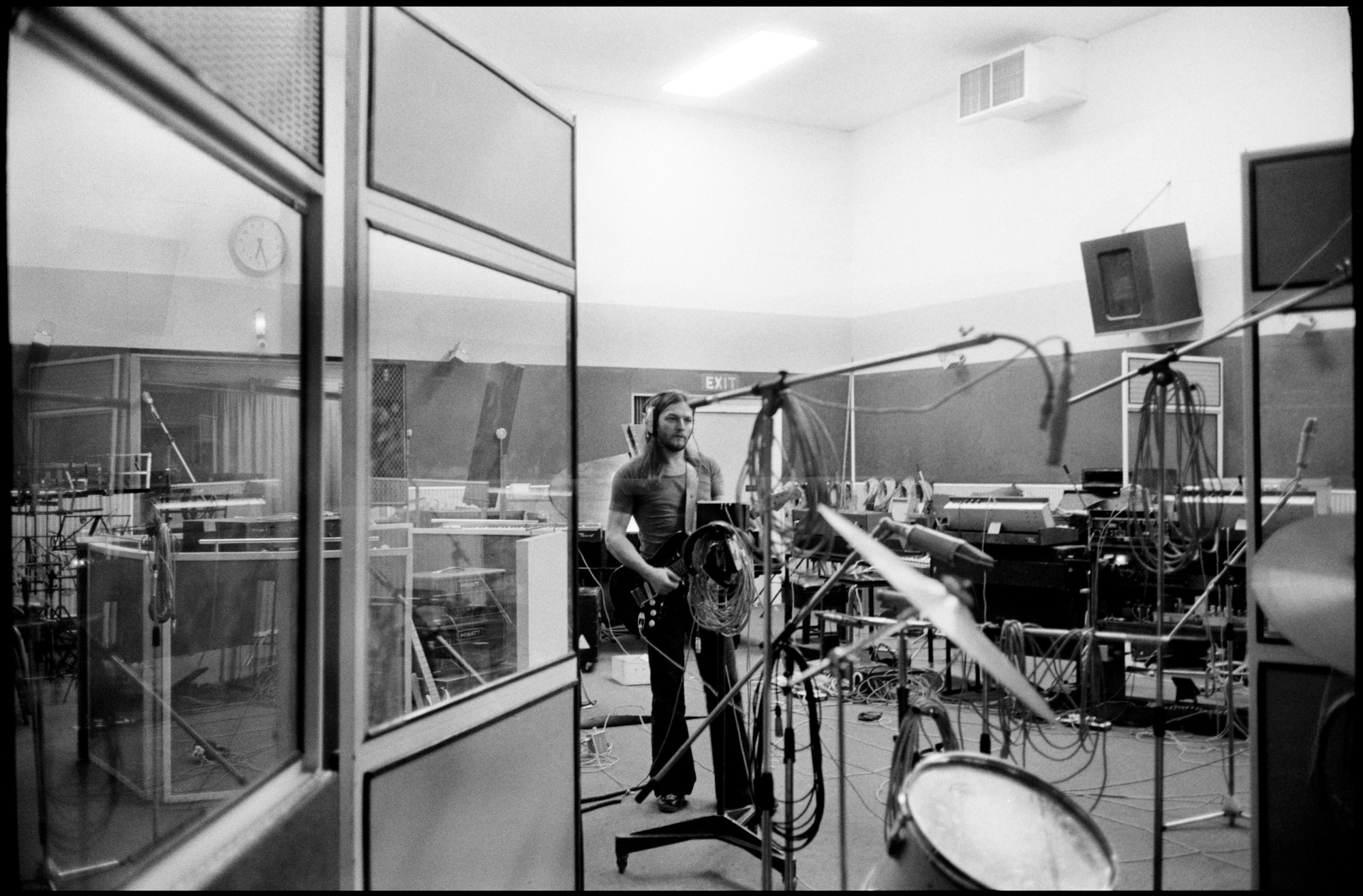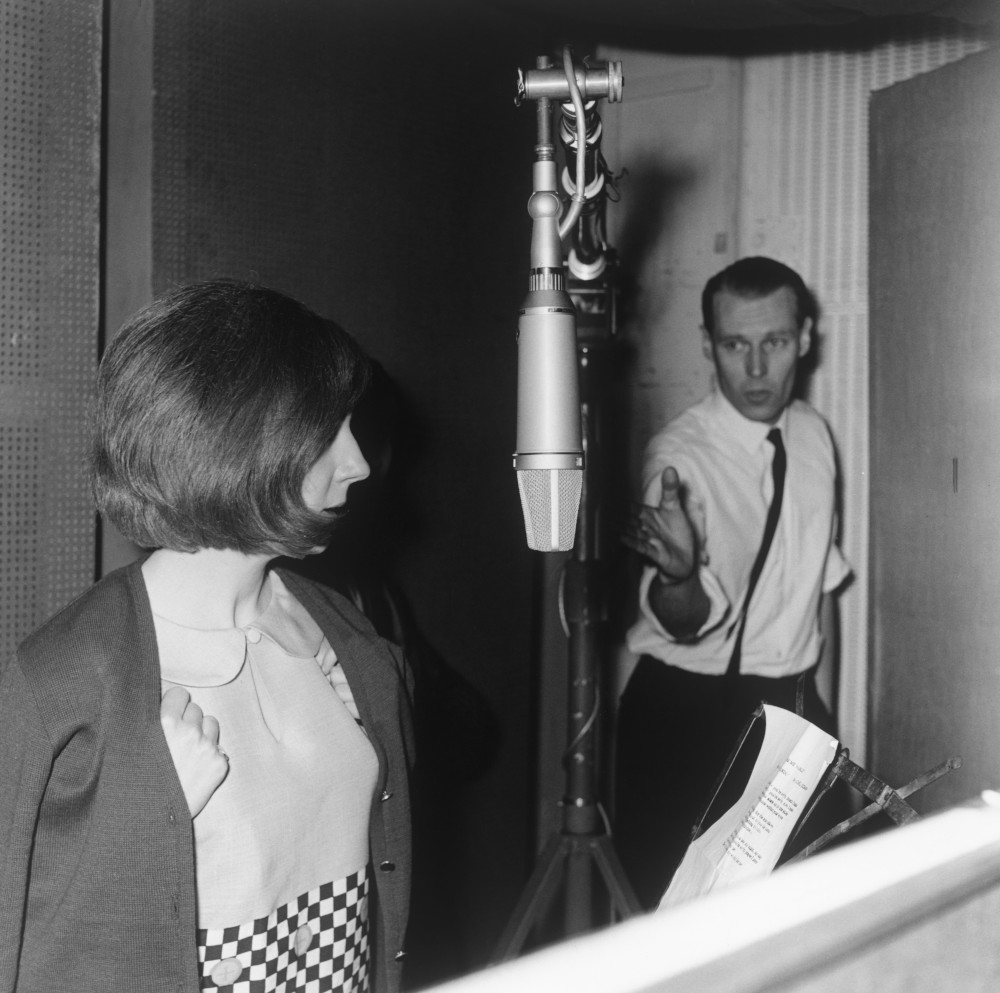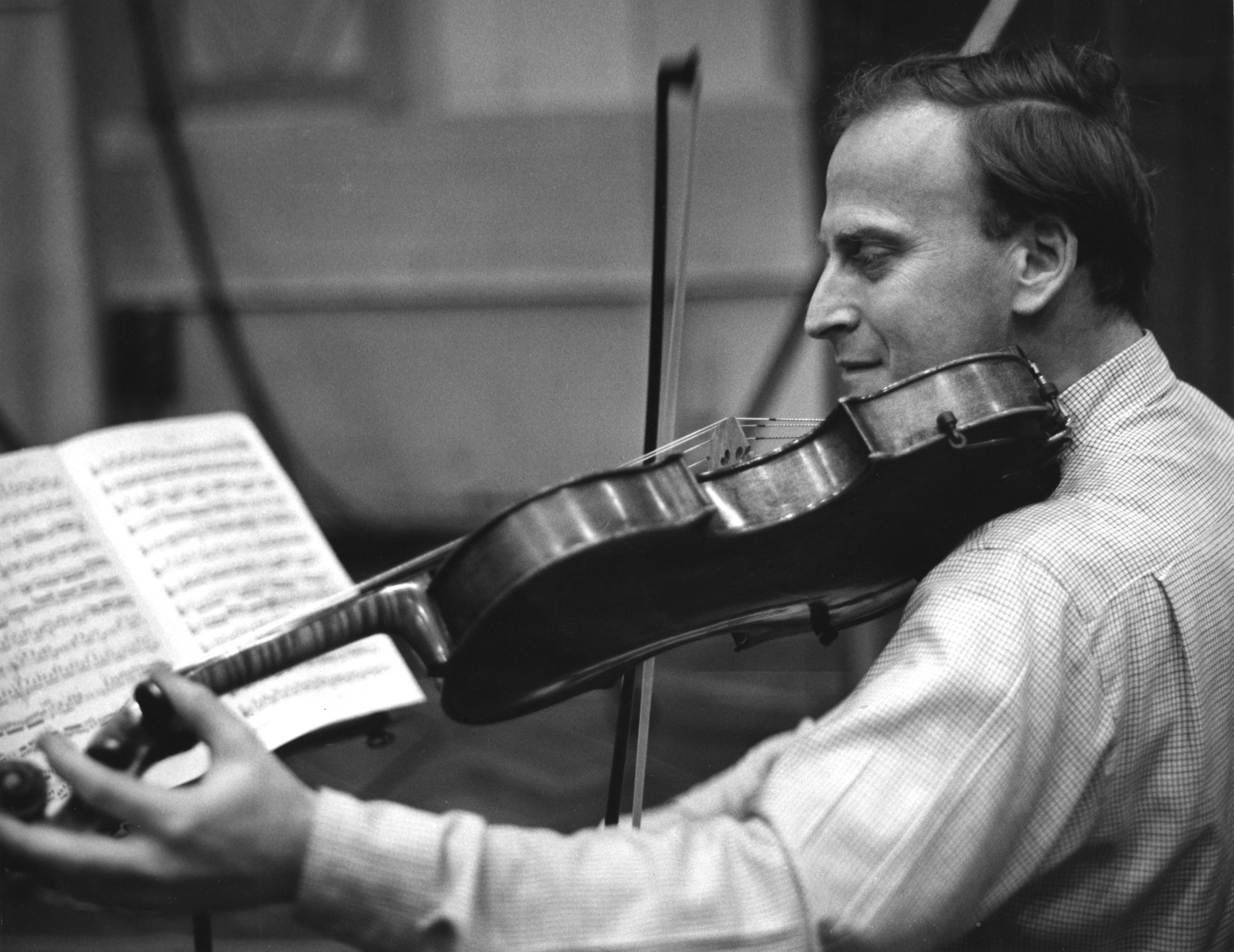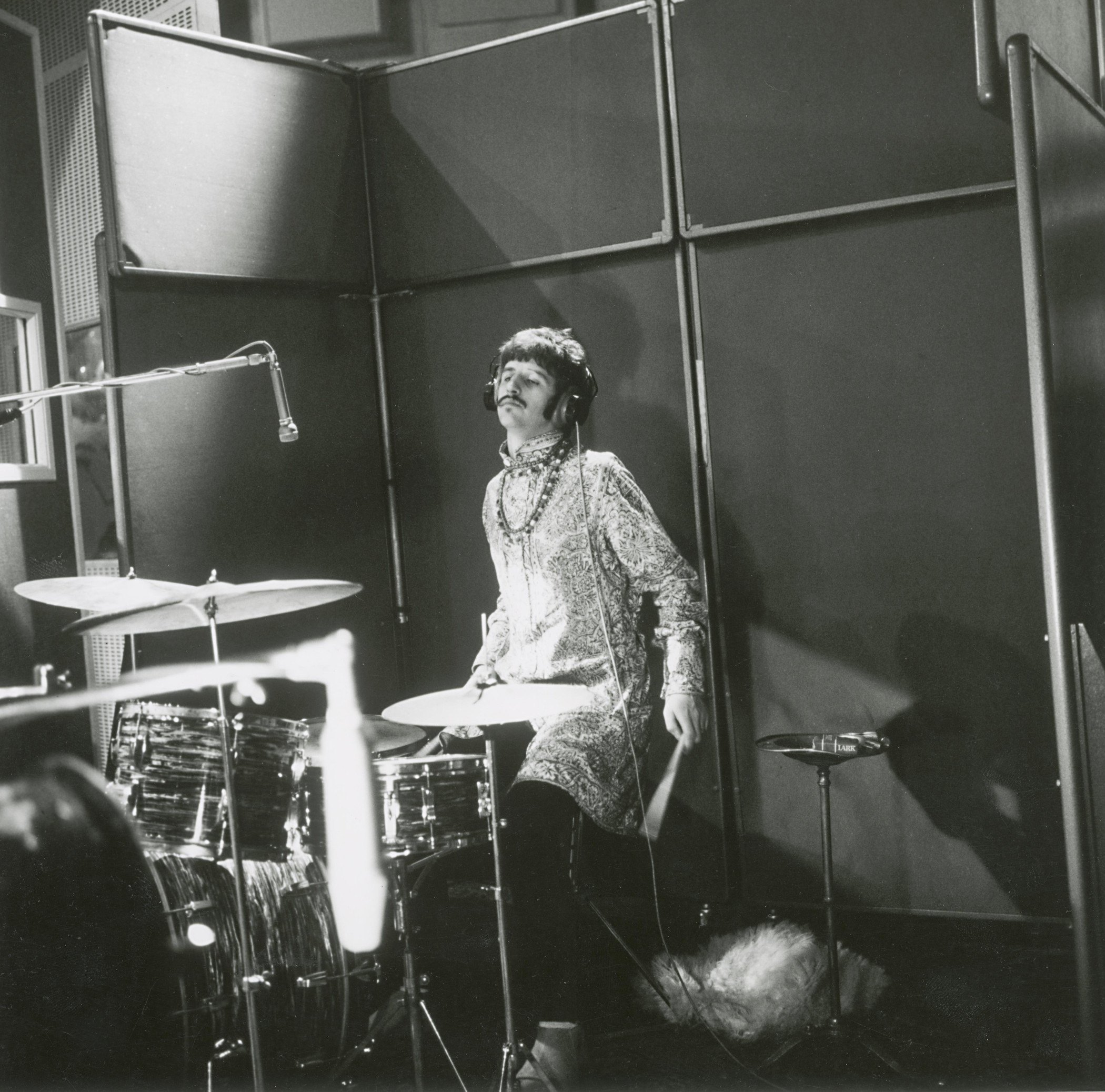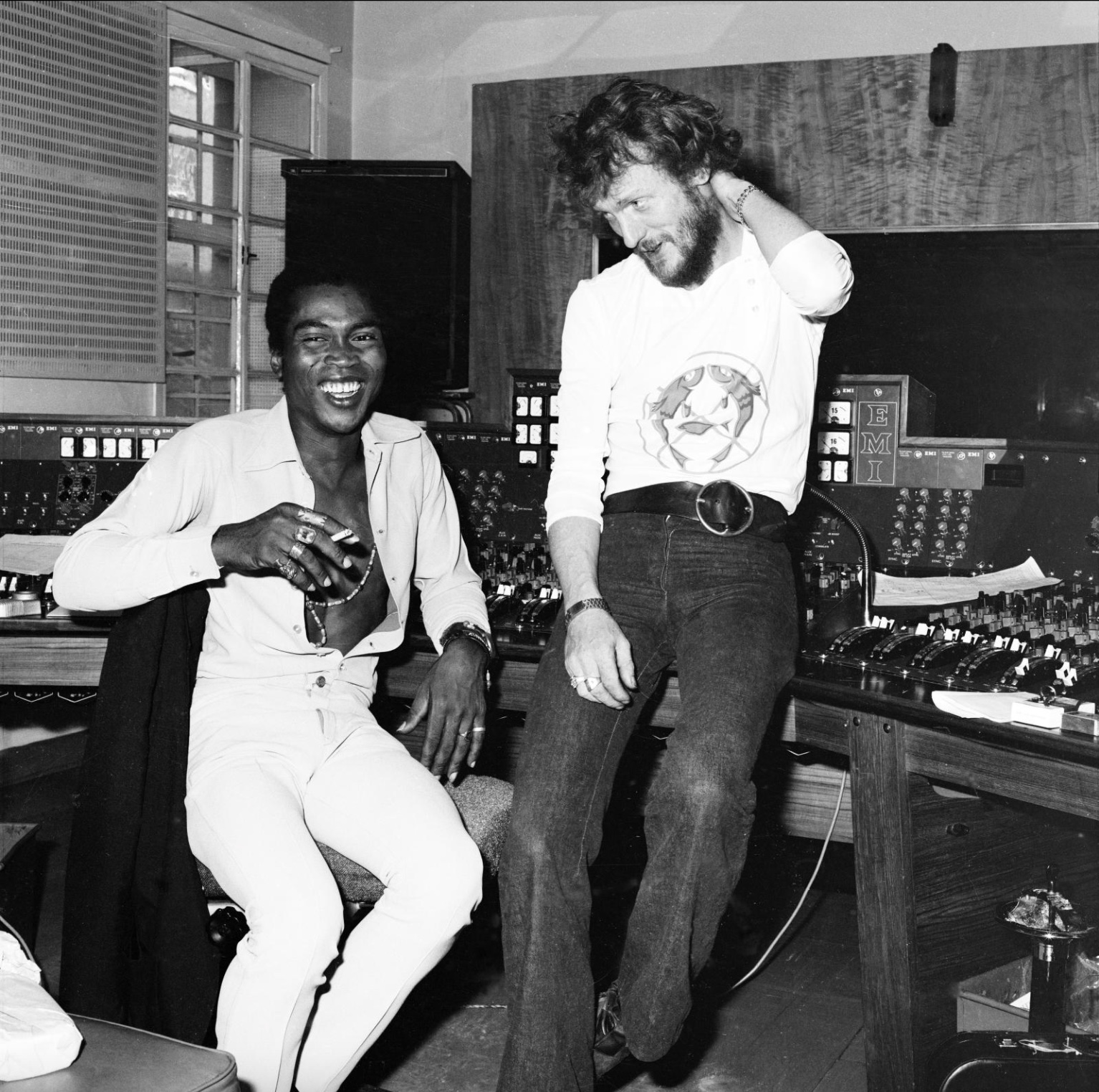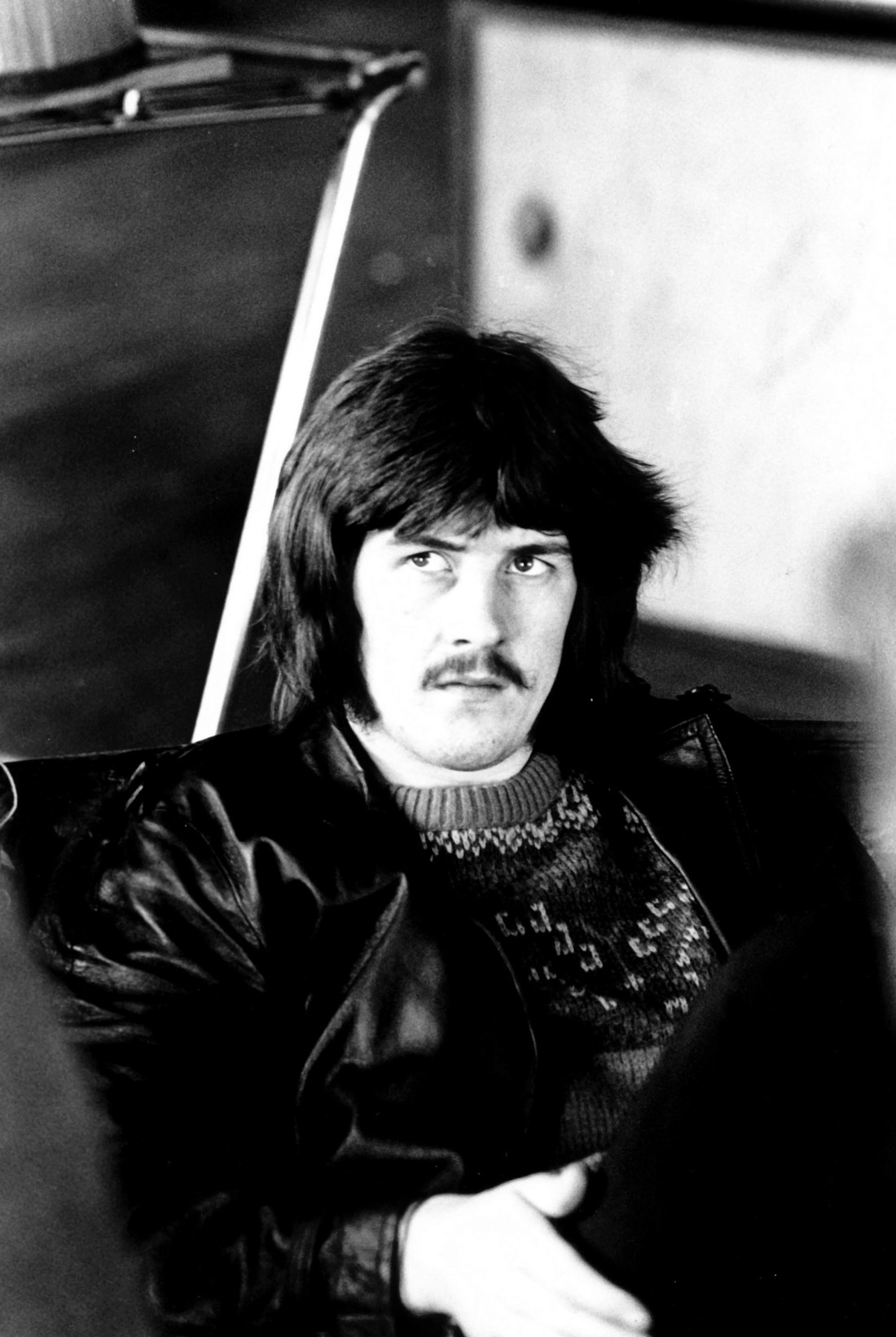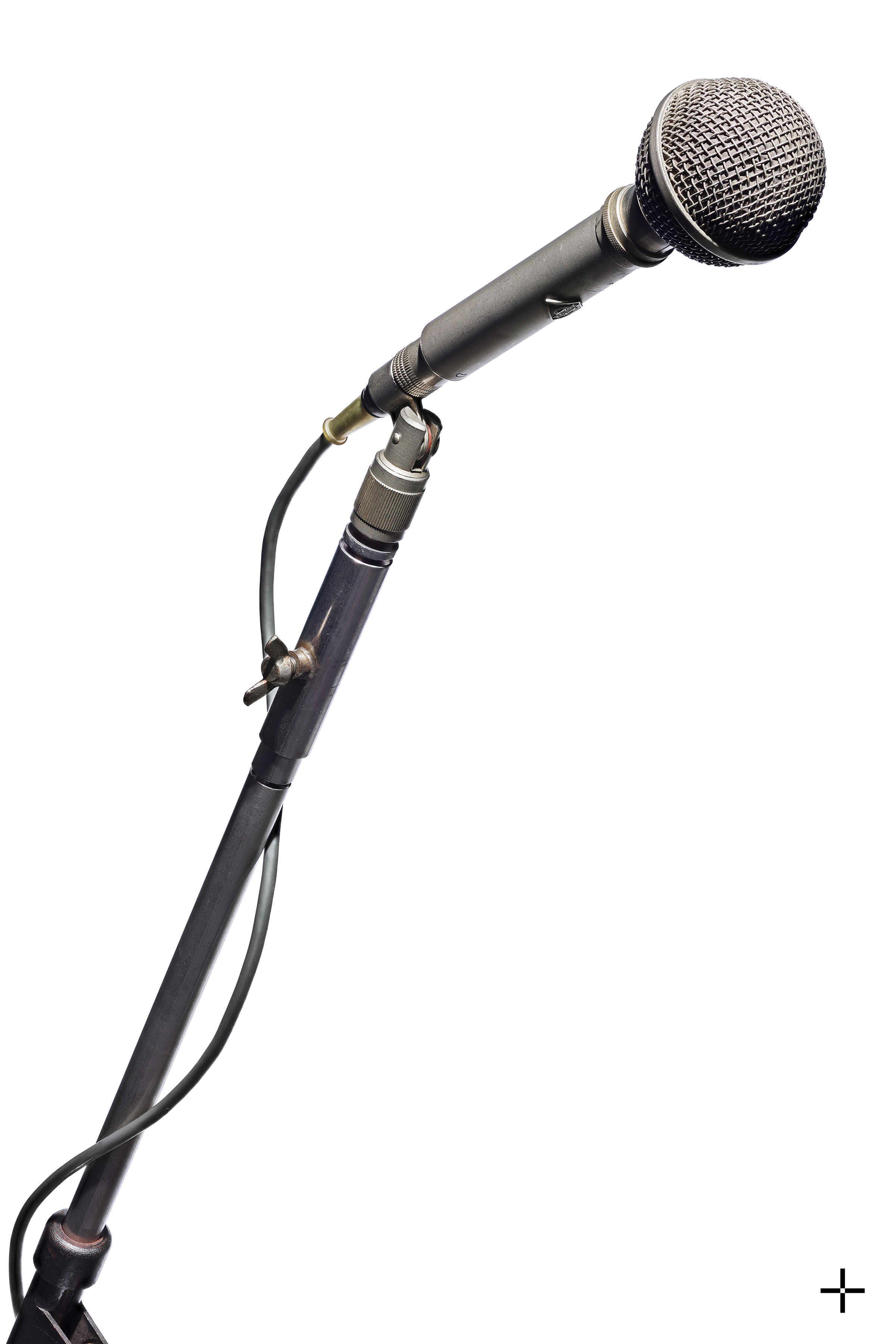
‘All You Need Is Love'
The Beatles
-
Neumann KM54
[1967]
During a special televised performance in Studio One on 25 June 1967, Paul McCartney used the Neumann KM54 (fixed with this ‘golf ball’ windshield) to sing ‘All You Need Is Love’.
This fixed-cardioid miniature was released in 1954 and soon proved itself a popular vocal microphone for TV and radio.
In the studio, it saw frequent use on guitar amps, vocals and sometimes even bass.
‘KM’ stands for ‘Kleines Mikrofon’ or ‘little microphone’.

‘Babooshka'
Kate Bush
-
Neumann U87
[1980]
The solid-state successor to the U67, the Neumann U87 was used to record the piano on Kate Bush’s iconic hit ‘Babooshka’ in 1980.
In fact, the sound of the U87 in Abbey Road’s Studio Two can be heard throughout Kate’s first number one album, ‘Never for Ever’.
From detailed session sheets stored by EMI Archive Trust, we see that the Neumann U87 was also used to record the guitars and an array of stringed instruments played by Kate’s older brother Paddy.

‘Over the Rainbow'
Judy Garland
-
EMI RM1-B
[1960]
The RM1-B was used on many orchestral sessions in the 1940s through to the 1960s.
When Judy Garland recorded a collection of songs with Norrie Paramor and producer Norman Newell between 2-9 August 1960, Abbey Road engineer Malcolm Addey chose the RM1-B to record ‘Lucky Day’, ‘Stormy Weather’, ‘It’s a Great Day for The Irish’ and the timeless ‘Over the Rainbow’.
This is one of EMI’s first ribbon microphones, designed in 1948 by EMI’s Reg Willard. It works by use of a thin, fragile piece of metal which is suspended within a magnetic field, picking up sound waves.

‘The Lord of the Rings'
Howard Shore
-
Neumann M50
[2001]
On orchestral sessions Neumann M50s are often configured using the Decca Tree technique, suspending three omnidirectional microphones above the orchestra in an equilateral triangle.
It was this configuration that was used to record the GRAMMY and Oscar-winning score for ‘The Lord of the Rings’ trilogy.
In 2001, the London Philharmonic Orchestra performed Howard Shore’s score for Peter Jackson’s ‘The Fellowship of the Ring’, ‘The Two Towers’ and ‘The Return of the King’ in a series of gruelling sessions that lasted 200 straight days in Studio One. The end result has since gone on to become one of the most iconic film scores ever.
This omni condenser is currently used for virtually every orchestral session at Abbey Road, from strings for Little Simz’s ‘Sometimes I Might Be Introvert’ to the scores for the ‘Call of Duty’ and ‘Halo’ video games.
*Both the M50 and M49 were released in 1952 and look nearly identical. The easiest way to distinguish between them is the red jewel on the front of the Neumann M49, as opposed to the clear jewel of the Neumann M50
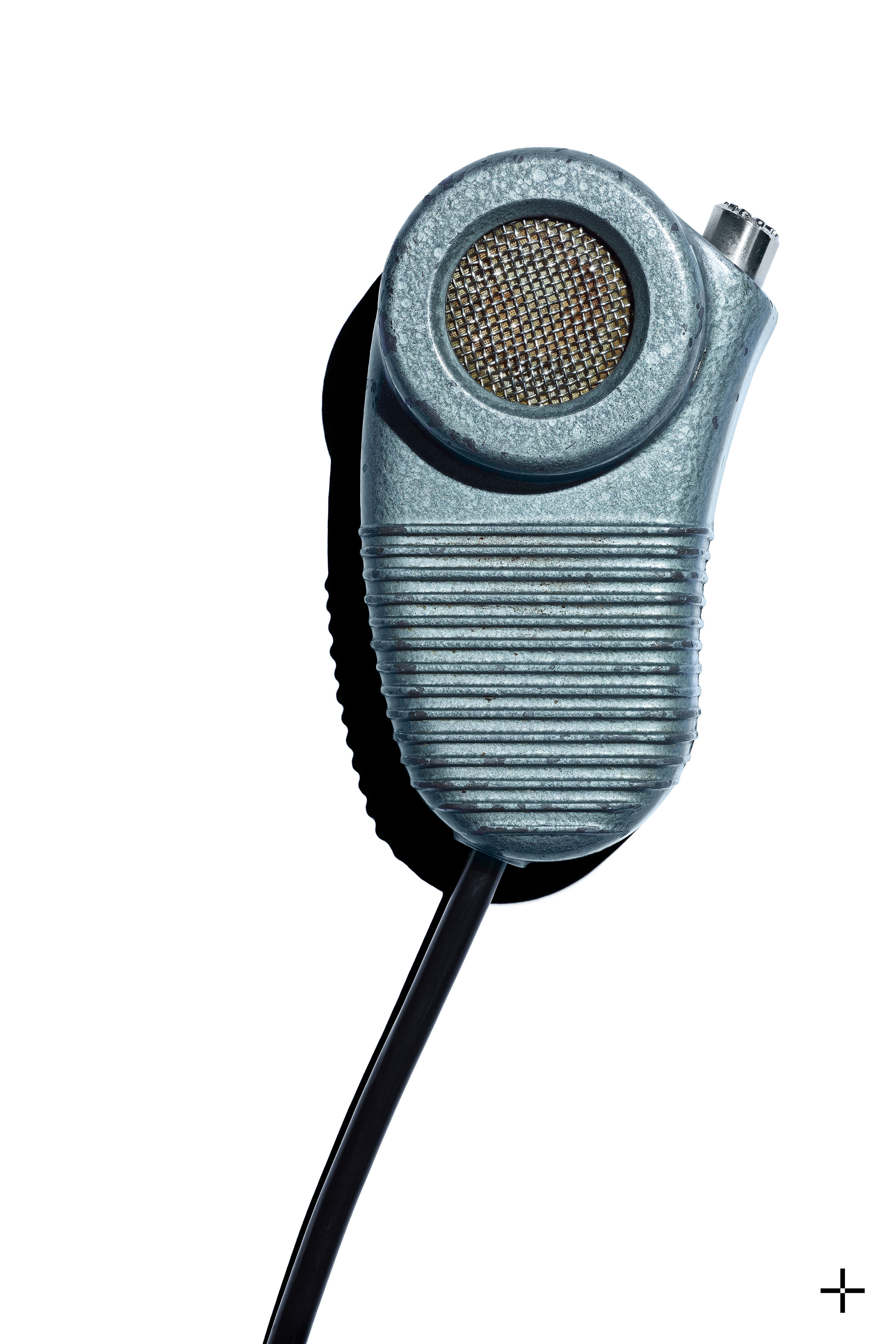
‘Sir George Martin'
-
Vitavox B50
[1955]
This iconic handheld dynamic mic was used as a talkback microphone by Sir George Martin to communicate with artists in the studio. It has facilitated thousands of Abbey Road conversations between Studio Two control room and live room.
The engineers on the session would have used the built-in mic on the mixing desk, so this mic became the all-important link between artist and producer.
George would have used it to speak to Peter Ustinov, Bernard Cribbins, Peter Sellers, Spike Milligan, Shirley Bassey, Matt Monro, Gerry and the Pacemakers, Billy J Kramer and The Dakotas, The Beatles, Cilla Black and more.
“It featured a push button on-off with an optional lock. I remember on one session in the 1960s with The Scaffold, Paul McCartney’s brother Mike McGear decided to prank everyone and leave the push button in the locked position so that everyone on the studio floor could eavesdrop on the control room.”
John Kurlander, Producer & Engineer: June 2023
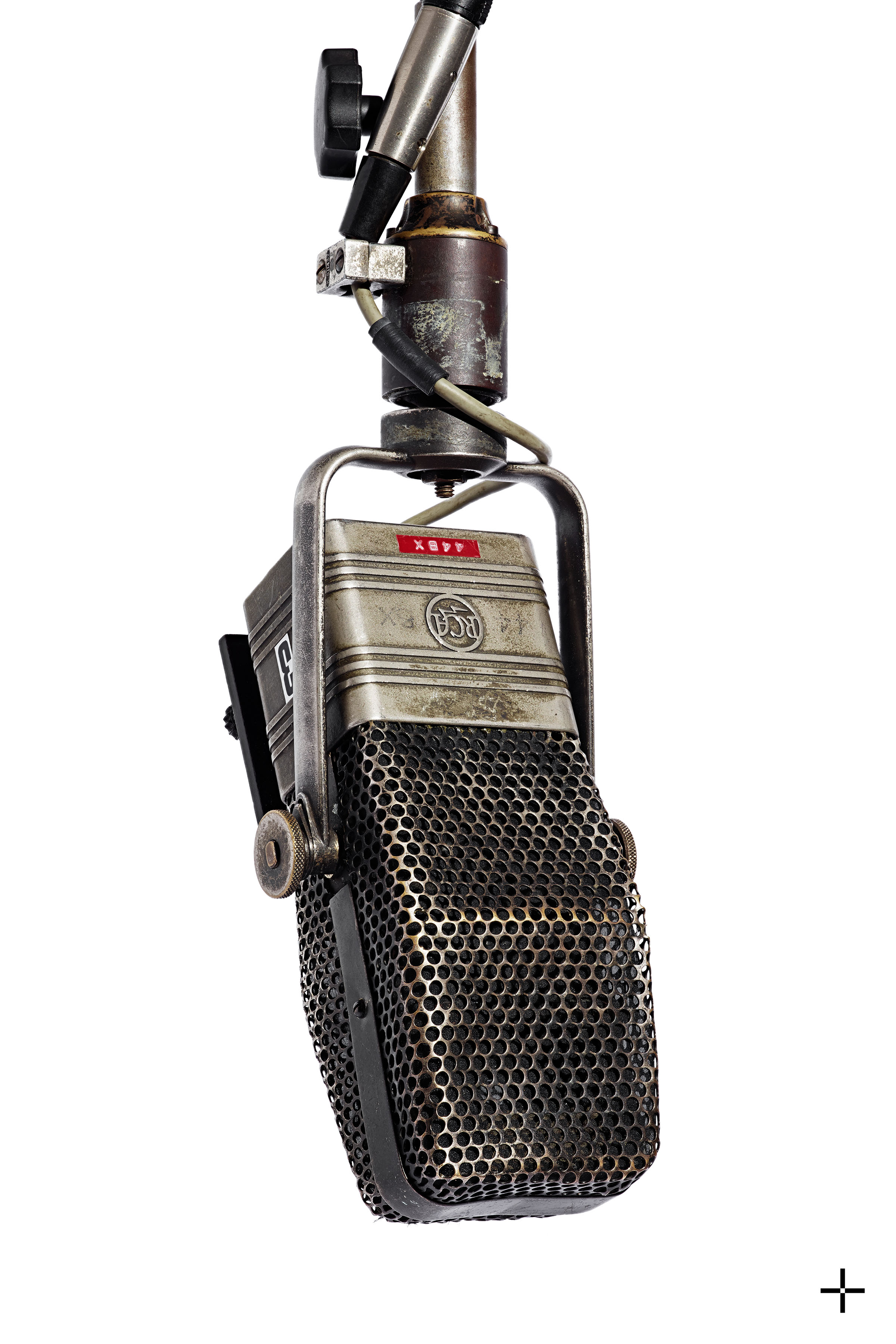
‘Yer Blues'
The Beatles
-
RCA 44BX
[1968]
On 13 August 1968, all four Beatles crammed into room 2A, a small storage cupboard next to Studio Two Control Room. With instruments in each corner and amps facing the walls, this was a truly unique session. The song they recorded was ‘Yer Blues’.
The next day, John Lennon re-recorded his lead vocal part with an equally unique microphone, the RCA 44BX. It was the only time this microphone was used on a Beatles session.
This ribbon microphone was designed in America in 1932 and acquired by Abbey Road in the 1940s. It was used on a variety of sessions in the ‘40s and ‘50s, ending up as the solo drum mic for many Cliff Richard & The Shadows sessions and even as a vocal mic for Gene Vincent and Adam Faith.
Its unmistakable look and smooth output signal have led it to become one of the world’s most revered microphones.
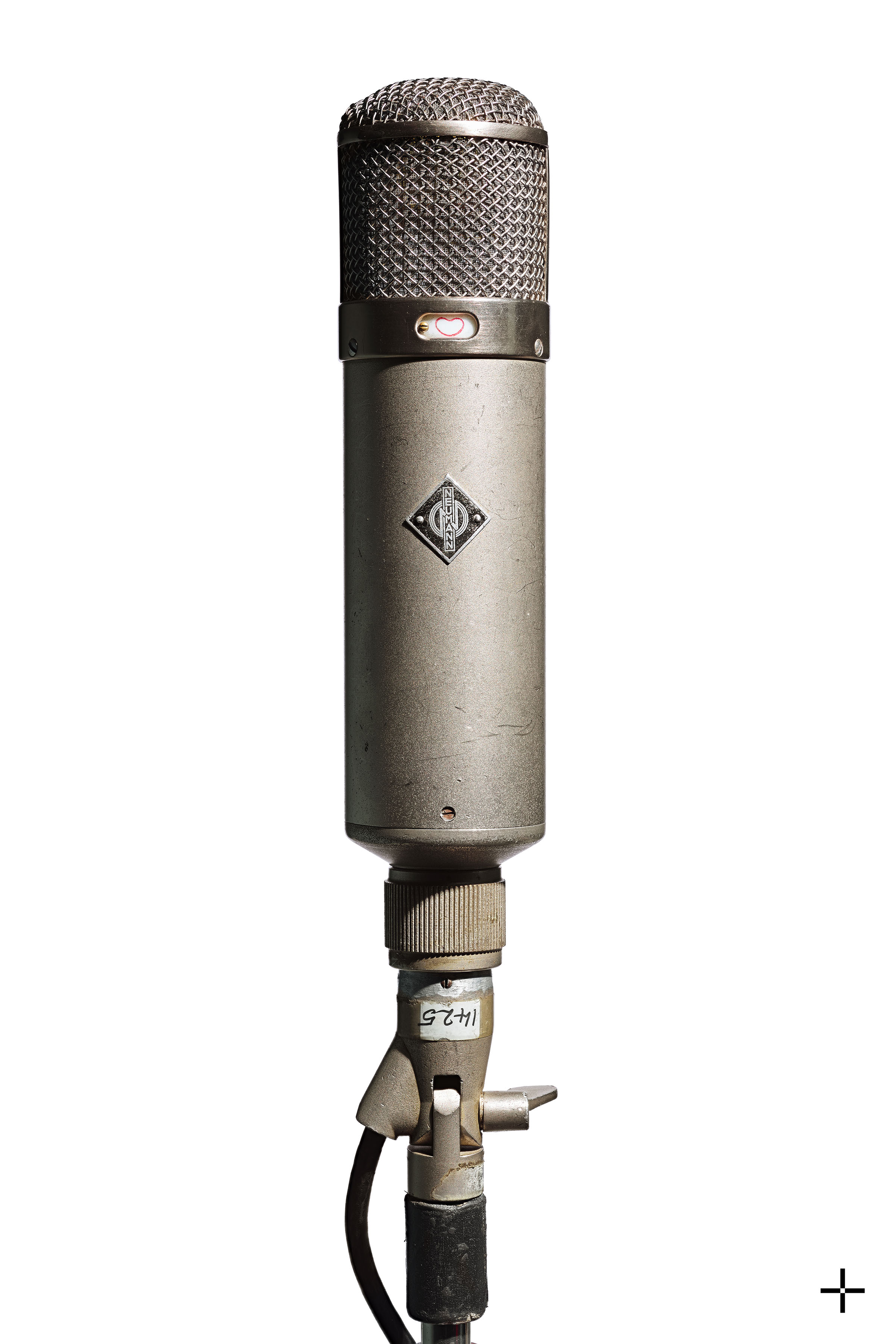
‘Body and Soul'
Amy Winehouse
-
Neumann U47
[2011]
In what turned out to be her last recording session, Amy Winehouse used the Neumann U47 to record ‘Body and Soul’ with American crooner Tony Bennett on 11 March 2011.
Our most iconic microphone, the U47 remains the choice for vocals of all styles, seen in virtually every photograph of a singer at Abbey Road from the last 60 years. Used by everyone from Cliff Richard to Little Richard, from Maria Callas to Ella Fitzgerald, from John Lennon to Adele.
It is Neumann’s first post-war commercial microphone circa 1948 and has a double gold diaphragm capable of omni or cardioid polar patterns. Since its conception, there have been many attempts to make microphones of similar quality. Perhaps the secret of the Neumann U47 is the combination of the VF14 valve and M7 capsule.
75 years after its creation and it’s still one of the best microphones in the world.
“The valve amplifiers in the original Neumanns are just fantastic and add a beautiful distortion. Distortion isn’t always a bad thing! They also have a clear, pristine high range.”
Lester Smith, Technical Engineer: Microphone Collection, Abbey Road Studios

‘The Dark Side of the Moon'
Pink Floyd
-
Neumann KM86
[1972]
The Neumann KM86 was used by engineer Alan Parsons to record David Gilmour’s era-defining electric guitar for Pink Floyd’s ‘The Dark Side of the Moon’. The KM86 was also chosen for Richard Wright’s keyboards, Leslie speaker, piano, and even Nick Mason’s hi-hat!
The range and quality of sound captured on ‘The Dark Side of the Moon’ remains some of the best of all time. Without the KM86, this masterpiece of an album simply wouldn’t sound the same.
“Generally I used the KM86 in cardioid placed about a foot away from David’s guitar cabinet. If you were too close, it would be too trebly.
The KM86 was a great mic in particular because it had phantom power and switchable polar patterns – unusual for a small diaphragm. On occasion I might have experimented using either omni or figure-of-eight to pick up a bit of the room.”
Alan Parsons OBE, Producer & Engineer: June 2023
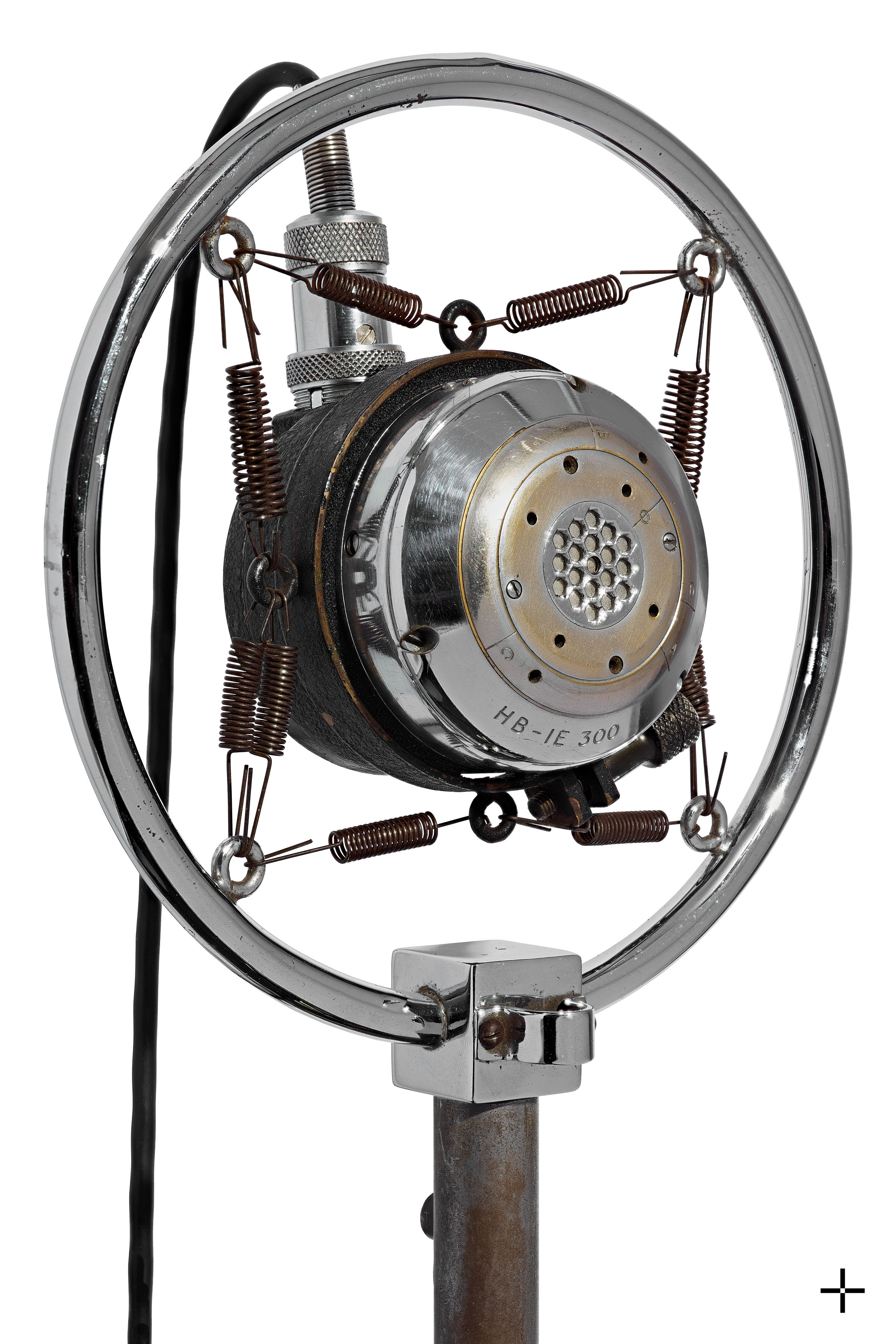
‘Stardust'
Glenn Miller and Dinah Shore
-
EMI HB1-E
[1944]
In what was his last recording session, Glenn Miller arrived at Abbey Road on 16 September 1944 with the American Band of Allied Expeditionary Forces to record ‘All I Do is Dream of You’ and ‘Stardust’ with big band star Dinah Shore.
The HB-1E* was used to capture the lead vocal as well as a natural balance of the brass, strings, percussion, guitar and double bass.
Designed by EMI engineer Alan Blumlein and built by Herbert Holman in 1931, the HB1 is one of our most important historical mics. In most of the photos from Abbey Road in the 1930s and ‘40s, this moving-coil microphone is the one being used.
A month before the Studios official opening in November 1931, American bass-baritone Paul Robeson recorded a cover of Hoagy Carmichael’s ‘Rockin’ Chair’ in Studio Three using the HB1. It became the first published recording out of Abbey Road.
The mic remained in constant use at Abbey Road until the arrival of condenser microphones in the ‘50s.
*HB stands for Holman/Blumlein

‘Alfie'
Cilla Black
-
Neumann U67
[1966]
On 22 February 1966, with Sir George Martin in the control room and Burt Bacharach conducting in Studio One, the Neumann U67 was used to record Cilla Black’s striking vocal for ‘Alfie’.
The performance has gone on to become one of the most famous Abbey Road moments of all time.
“Introduced in 1960, the Neumann U67 large-diaphragm condenser microphone quickly became one of the most popular and versatile microphones used at Abbey Road and remains an integral part of many of today’s recordings.
I have been fortunate to have been involved in sessions when it has captured the magic in the performances of artists across the full spectrum of music whether it be the exquisite sounds of the brilliant Jacqueline du Pré playing her cello, the sensuous sounds of legendary jazz saxophonist Stan Getz, the silky-smooth voice of Matt Monro or the distinctive guitar tones and playing of Eric Clapton.”
Jeff Jarratt, Producer & Engineer: June 2023

‘Yehudi Menuhin'
-
Neumann M49
[1958]
On 21-24 April 1958 in Studio One, the Neumann M49 was used to capture violin prodigy Yehudi Menuhin’s violin while collaborating with renowned Hungarian/British pianist Louis Kentner.
This quintessential orchestral mic was not only used on many Menuhin sessions, but also for such recordings as Sir Thomas Beecham’s ‘Beethoven Mass’ where it was chosen for voila, cello, woodwind, and as the main orchestra pair.
It is not limited to orchestral sessions, however. Our head of audio products Mirek Stiles remembers the mic being used to record Nick Cave’s vocals for ‘No More Shall We Part’ in 2000.

‘Ravi Shankar'
-
Neumann KM56
[1961]
On 26 September 1961, nearly a year before The Beatles first stepped foot in Abbey Road, the Neumann KM56 was used to record Indian classical musician Ravi Shankar’s sitar in Studio Three.
Part of Neumann’s 1953 series of small-diaphragm miniatures, the KM56 is an omni/cardioid/figure-of-eight microphone most often used on acoustic instruments in the Studios.
It can be traced back to a range of orchestral recordings at Abbey Road, capturing individual instruments like big band star Joe Loss’ trumpets or serving as the main orchestra stereo pair for greats such as Sir Malcolm Sergeant and the Royal Philharmonic Orchestra.

‘Sgt. Pepper’s Lonely Hearts Club Band'
The Beatles
-
AKG D19C
[1967]
We call this mic Ringo because it lived suspended over his drum kit for the majority of The Beatles’ career.
When recordings began for ‘Sgt. Pepper’s Lonely Hearts Club Band’, engineer Geoff Emerick even began using the D19C across his hi-hat and toms. The mic played a large part in the sound of Ringo’s drums from ‘Beatles for Sale’ through to ‘Abbey Road’.
The AKG D19C has at various times been the preferred microphone for drum overhead, snare, toms and even bass drum. A testament to its versatility, it has also been used on piano and acoustic guitar. Even serving as the engineer’s talkback mic on the REDD.51 mixing desk.
Although considered a disposable ‘work horse’ microphone in the ‘60s, the AKG D19C has since become a very rare collector’s item due to the fact the capsules are very delicate and virtually impossible to repair.

‘Fela & Ginger'
-
AKG D20
[1971]
On 25t July 1971, Afrobeat pioneer Fela Kuti arrived at Abbey Road Studio Three to record a live album accompanied by two legendary drummers. One was a regular collaborator, the incomparable Tony Allen. The other was a new friend named Ginger Baker who used to play for a band called Cream.
For the first and only time, a bar was set up at the back of the studio as a live audience of 150 arrived for the show.
Producer Jeff Jarratt and engineers John Kurlander, John Leckie and Tony Clark knew exactly which microphone to use for the bass drums used that evening: the mic used on hundreds of bass drums at Abbey Road over the years, the king of the kick, the AKG D20.
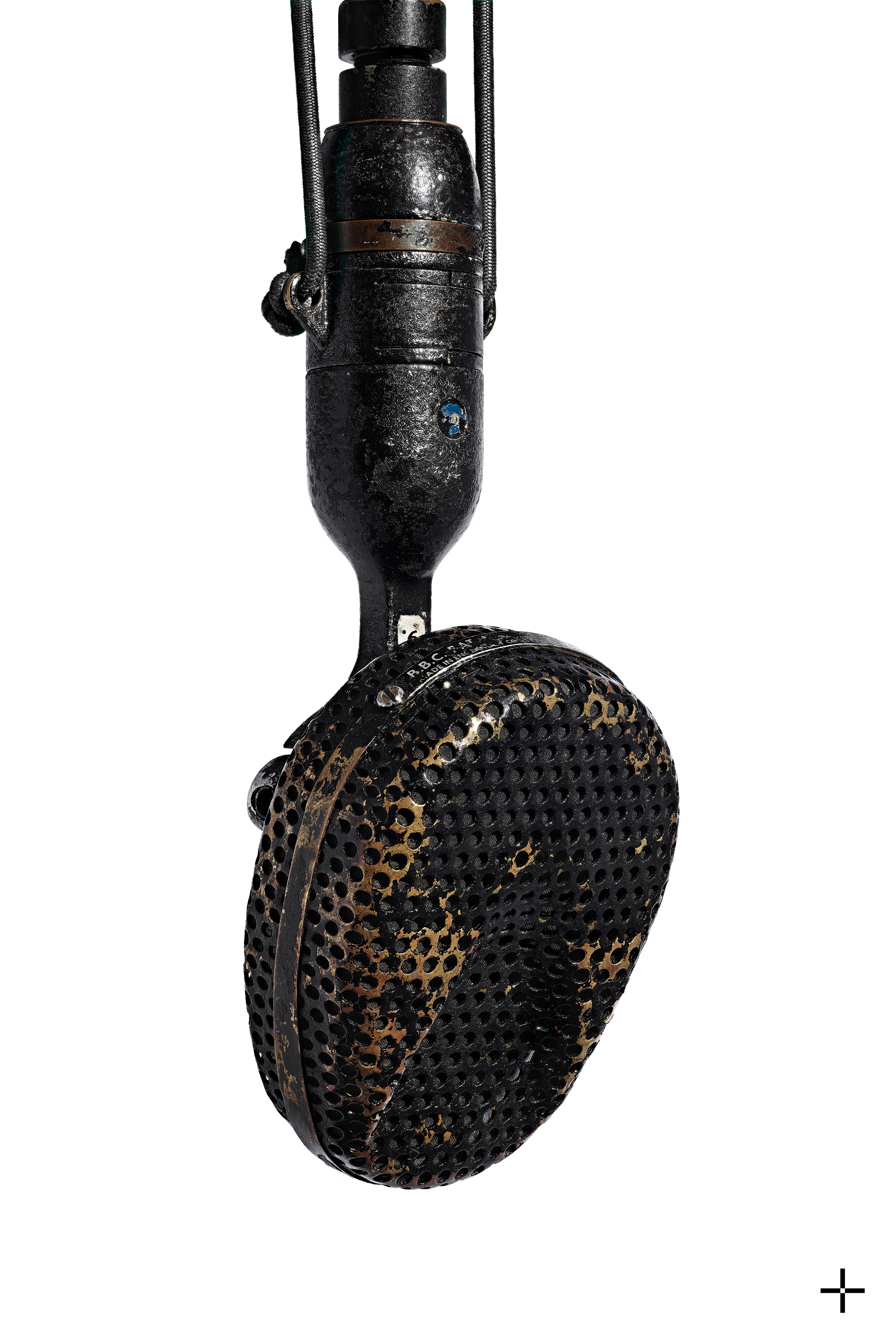
‘Interstellar Overdrive'
Pink Floyd
-
STC (Coles) 4038
[1967]
On 16 March 1967, the 4038 was placed in front of a young Roger Waters’ bass cabinet as Pink Floyd set up to record ‘Interstellar Overdrive’ in Studio Three.
“When engineer Peter Bown arrived his first words to me were, ‘F***! That’s loud!’ He decided to use a 4038 to record the bass guitar. It was an unfortunate choice as within a few minutes the sheer volume of sound had broken the microphone’s ribbon.
Producer Norman Smith felt compelled to write a letter of apology to both the Studio Manager and the Managing Director of EMI Records regarding the damage to the mic in the hope that the incident would not jeopardise the group’s future relationship with the company. Luckily they accepted his apology!”
Jeff Jarratt, Producer & Engineer: June 2023
The 4038’s warm, mellow sound makes it ideal for recording anything from guitar to French horns to drums. It is still used in this capacity today for such recordings as Sam Smith’s ‘Love Goes (Live at Abbey Road Studios)’.

‘Odessey & Oracle'
The Zombies
-
AKG C12
[1967]
Our legendary AKG C12 microphone features the original CK-12 capsule found only in the earliest models from around 1953. This had less of the high-end frequency response we normally attribute to C12s. Though commonly used for strings, woodwind, brass or piano, this microphone found its place in history in 1967 as a bass mic.
That year, the expensive AKG D20 was banned from use on low end frequencies such as bass and bass drum because bands kept blowing them out. Engineers like Geoff Emerick and Peter Vince first tried the Neumann U67 as a replacement for bass, but soon found the C12 to create a fuller sound when paired with a DIT (Direct Injection Transformer) fed straight into the recording desk.
This progression is reflected on The Zombies cult-classic album ‘Odessey and Oracle’, recorded in Studio Three in the summer of ’67.
Their June and July sessions feature the Neumann U67 on bass. By August, the C12 had taken its place, resulting in the amazing bass sound on the iconic ‘Time of the Season’ and ‘Care of Cell 44’.

‘John Bonham'
-
AKG D30
[1968]
When Olympic Studios closed in 2009, we were fortunate to acquire some of their legendary microphones. This AKG D30 is one of those mics.
Used by The Rolling Stones, The Who, Jimi Hendrix Experience and Led Zeppelin as a kick drum mic, its sonic qualities helped to define the drum sounds of Charlie Watts, Mitch Mitchell, Keith Moon and John Bonham.
The AKG D30 played no small part in the thunderous kick drum sound on the Led Zeppelin songs ‘Good Times Bad Times’ and ‘Whole Lotta Love’.

‘Come Together'
The Beatles
-
Neumann U48
[1969]
Six years after the Neumann U47, the U48 was introduced.
It is equal in sonic quality but also offers a figure-of-eight polar pattern, that is, sensitive front and rear with a high sound rejection on either side.
Paul McCartney and George Harrison used the U48 during the recording sessions for 'Abbey Road', the album which gave us our name.
Its figure-of-eight polar pattern allows two singers to ‘Come Together’ and simultaneously sing into one microphone. One side often sporting a custom-made spit screen designed in-house by Peter Dix.
Though it is normally associated with vocals, the U48 has also been a popular choice for instruments like the electric guitar and organ.


